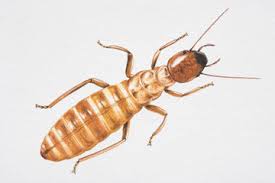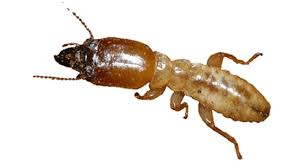How to Spot Termites in Your Home
Every year, termites cause more than $5 billion in property damage in the United States. Termites are known as “silent destroyers” because of their ability to chew through wood, flooring and even wallpaper undetected for years—damage that isn’t covered by most homeowners’ insurance policies.
As spring approaches and the ground begins to warm across the country, termite populations will emerge in search of new structures to invade. Starting from South to North, termite explorers, referred to as swarmers, will look for hospitable homes, with buildings that have sustained damage from severe winter weather particularly at risk. Once swarmers have determined your home to be a good fit, it’s likely that the rest of the termite colony will follow, resulting in a full-blown termite infestation.
By becoming familiar with the species of termites that are most prevalent in their area along with their habits, homeowners are better equipped to detect the warning signs of an infestation, and call in a pest professional to assist with termite identification before the problem gets out of hand. Here’s a handy guide to help you learn how to spot termites in your home and identify their species correctly.
Termite or Flying Ant?
Many people will see termite swarmers in homes during the spring and mistake them for flying ants; this can end up being a costly mistake if the rest of the termite colony follows the swarmers. Winged termites have a straight waist, straight antennae and their wings are equal in size. Flying ants on the other hand have waists that are pinched in the middle, bent antennae and two sets of wings, with the top set being larger than the lower. Termites are also most likely to swarm in the spring, while flying ants may swarm at various times of the year.
Subterranean Termites
Found in every U.S. state except Alaska, subterranean termites are creamy white to dark brown or black and 1/8 inch long. They live in underground colonies or in moist secluded areas aboveground that can contain up to two million members. Subterranean termites also build telltale “mud tubes” to gain access to food sources and protect themselves from the open air. This termite species is considered to be by far the most destructive of all termites throughout the United States.

Formosan Termites
Formosan termites are similar in color to subterranean termites but can grow to 1/2 an inch long. They can be found in Hawaii, California and much of the southern U.S. Originally from China, Formosan termites are the most aggressive known termite species, capable of consuming one foot of 2X4 wood in just 25 days. They live in huge underground colonies with an average of 350,000 workers and build intricate mud nests inside the walls of a structure. Because of their aggressive nature, Formosan termites are difficult to control once they infest a building; a mature Formosan termite colony can cause severe structural damage to a home in as little as six months.
Dampwood Termites
Dampwood termites can be spotted throughout the pacific coastal and adjacent states, the desert or semi-arid southwest, and in southern Florida. This termite species is typically between 1/2 and 5/8 of an inch long. As the name suggests, dampwood termites infest wood with high moisture content and don’t usually infest structures because of their need for excessive moisture, but it is important to avoid attracting them as they can cause serious property damage if they make themselves at home.
Drywood Termites
Unlike subterranean and Formosan termites, drywood termites do not require contact with the soil. They are typically between 3/8 and one inch long and often establish nests in roof materials and wooden wall supports, along with dead wood that may be around the home. They are found in the southern states, from North Carolina through the Gulf Coast and in to the coastal areas of California. They form colonies of up to 2,500 members and usually swarm on sunny, warm days after a sudden rise in temperature.

Differences in Castes
Termites have three different castes, each of which performs different roles within the colony. Each caste has unique physical features to help it fulfill its role in the colony. Even within the same species, termites that belong to different castes can look very different.
Workers Worker termites tend to be lighter in color. Workers are the smallest of the castes. In general, workers and nymphs are soft-bodied and look like larvae.
Soldiers
Soldiers tend to have worker-like bodies, but with hard heads that are often dark in color and have large jaws. Soldier termites have soft bodies with hard, enlarged heads and large jaws (mandibles) that help them protect the colony. Fully mature, reproductive termites have wings and hard bodies that prepare them for leaving the nest to start new colonies.
Alates Or Flying Termites
Alates (swarmers) have wings and hard exoskeletons that may be very dark in color. Additionally, flying and swarming termites can be recognized by their prominent wings. Flying termites have two sets of wings of equal length, and these wings are almost twice the size of the termite’s body. Termite swarmers appear to have two body segments with a straight abdomen, and straight antennae.

Carpenter ants
look very similar to swarming termites due to the fact that both reproductive stages have wings. If you find signs of winged insects, don’t panic and assume that they are automatically termites. Carefully pick one up and look at under a magnifying glass. Look for the most common sign – the color. Subterranean termite swarmers are solid black, drywood swarmers are solid red, while carpenter ants are usually red and black or dark brown. The other big difference is in the body. Termites all have a long body with no small segments attached. Ants always have a thin neck and a thin waist. Check out the chart below to help determine the difference. If you think you have carpenter ants, then don’t go any further, because carpenter ants require a totally different treatment than termites. Click here for more info on Carpenter Ants.
Ants species that are commonly confused with subterranean termite swarmers are carpenter ants and fire ants. Both of these ant species have winged reproductives that swarm in the early spring and randomly during the year. The important thing to remember however, is that subterranean termites only swarm in the spring in the US, and occasionally in the fall. Subterranean termite swarmers are very poor fliers and only use their wings to swarm. They will break them off soon after swarming to make crawling easier. They will then search out a mate and pair off to start a new colony. You may encounter piles of broken wings, especially on window sills, and near areas of sunlight such as doorways, etc.
What are the signs of a termite infestation?
Termites are often referred to as “silent invaders” because of their ability to enter into and live virtually undetected by property owners. It typically isn’t until the damages that they have caused are finally noticed that the termite infestation is discovered. Termites can work undetected from weeks, months, or in some cases even years. Signs of a termite infestation include:
- Finding wood in or around your home that is splintered, weathered, or that has small holes on its surface.
- Flooring that “feels” spongy when you walk across it.
- Walls which sound hollow when you tap on them.
- Doors and windows that appear warped and are no longer opening or closing properly.
- Finding mud tubes running along the ground toward your home, running up your home’s foundation, or running along your home’s basement walls. Termites travel to and from their nest to their food source in these mud tubes to limit their exposure to outside elements and predators.
- Observing a termite swarm. During the spring season winged termites will fly from a mature colony to mate creating a termite “swarm” in the process.
